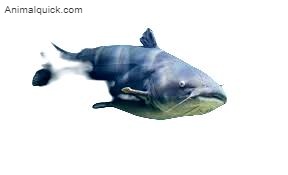Are fish reptiles? This question comes up because fish & reptiles have some common personalities.
However, despite these similarities, fish & reptiles are quite different.
In this blog, we’ll explore the differences between these two groups, highlighting their unique characteristics & evolutionary histories to explain why fish are not considered reptiles.
Are Fish Reptiles?
No, fish are not reptiles. They are different kinds of animals. Fish live in water, while reptiles like snakes & turtles live on land.
- Fish are water-living animals with fins, scales & gills like tuna, trout, sharks, rays & eels.
- Reptiles are air-breathing animals with scales or scutes on their skin like turtles, snakes, lizards, crocodilians & tuatara.
Why are Fish Not Reptiles?
Fish are not considered reptiles for several reasons such as life cycle variations, temperature regulation, and respiration methods.
- Evolutionary Differences: Fish and reptiles have distinct evolutionary histories. Fish evolved in water, while reptiles originated from terrestrial tetrapods (four-limbed vertebrates) that moved onto land.
- Respiration Methods: Fish breathe through gills, and get oxygen from water, while reptiles breathe air using their lungs.
- Life Cycle Variances: Fish typically lay eggs in the water, which hatch into juvenile fish. Where, many reptiles lay eggs on land, protected by amniotic membranes, and undergo distinct early life stages before becoming independent.
- Anatomical Distinctions: While both groups possess scales, fish scales are lighter and more flexible, suited for swimming. Reptile scales are thicker, aiding moisture retention for survival on land.
- Temperature Regulation: Fish bodies closely match the temperature of the water they inhabit, while reptiles are “cold-blooded,” relying on external heat sources and behavior to regulate their body temperature.
What is a Fish?
A fish is an aquatic vertebrate animal classified under the class Pisces (or Pisces & Agnatha, depending on the classification system). Fish have many characteristics that I have mentioned below.
- Gills: Fish use gills to extract oxygen from water which allows them to breathe underwater. Gills are specialized organs for gas exchange in aquatic environments.
- Scales: Most fish have scales that cover their skin. These scales vary in size, shape & texture offer protection & reduce drag while swimming.
- Fins: Fish have fins that help them move through water. These include dorsal fins (on the back), pectoral fins (on the sides), pelvic fins (on the underside), anal fins (near the anus) & caudal fins (tail fin). Fins aid in stability, steering & propulsion.
- Streamlined Body: Fish have a streamlined body shape that minimizes water resistance & helps them move efficiently.
- Cold-Blooded (Ectothermic): Most fish are ectothermic which means their body temperature matches the surrounding water temperature. They lack internal mechanisms to regulate their body heat.
- Lateral Line System: Fish have a lateral line system, a series of sensory organs along their sides that detect changes in water pressure & vibrations. This system helps them sense nearby objects & navigate their environment.
- Aquatic Habitat: Fish inhabit a variety of aquatic environments, from freshwater lakes & rivers to marine oceans & are adapted to their specific habitats.
- Varied Diets: Fish have diverse diets. Some eat plants (herbivorous), some eat meat (carnivorous), and others consume both plants and animals (omnivorous).
- Reproduction: Fish reproduce in different ways, including laying eggs (oviparous) or giving birth to live young (viviparous) in some species. Many fish have complex life cycles with various developmental stages.
What is a Reptile?
A reptile is a cold-blooded vertebrate animal classified under Reptilia.
Reptiles are known for their dry, scaly skin & lay eggs, though some give birth to live young.
They breathe air through their lungs. Common reptiles include snakes, lizards, turtles, crocodiles & tortoises.
Reptiles are ectothermic which means they depend on external heat sources to regulate their body temperature.
They are found in warm places where they can sunbathe to stay warm.
Most reptiles eat insects, small animals, or other reptiles, though some, like tortoises, eat plants.
Reptiles have been around for millions of years & were dominant during the age of dinosaurs.
Features of Reptiles
Reptiles have many unique features that make different them from other animal classes that I have mentioned below.
- Scaly Skin: Reptiles have dry, tough & scaly skin that prevents water loss & provides protection. The scales are made of keratin, the same substance in human hair & nails.
- Cold-Blooded (Ectothermic): Reptiles are ectothermic which means they depend on external heat sources to regulate their body temperature. They warm up by basking in the sun & cool down by seeking shade or burrowing.
- Lungs for Breathing: All reptiles have lungs & breathe air throughout their lives. They do not have gills or other respiratory structures.
- Amniotic Eggs: Most reptiles lay eggs with a protective shell (amniotic egg) that prevents drying out & provides nutrients to the developing embryo.
- Three-Chambered Heart: Most reptiles have a three-chambered heart with two atria & one ventricle, which helps circulate blood but does not fully separate oxygenated & deoxygenated blood.
- Internal Fertilization: Reptiles have internal fertilization, where the male deposits sperm inside the female’s body to fertilize the eggs.
- Ectothermic Metabolism: Reptiles have a slower metabolism compared to warm-blooded animals (like mammals & birds), which means they need less food & can survive on a lower caloric intake.
- Limbs & Locomotion: Most reptiles have limbs, though some, like snakes, are limbless. They use various methods of movement, including crawling, slithering & climbing.
- Sensory Adaptations: Reptiles have specialized senses, such as some lizards detecting ultraviolet light & many snakes having heat-sensing pits to locate prey.
- Different Skull Structure: Reptiles have a more rigid skull with fewer movable parts than mammals which offers better protection for their brain & sensory organs.
Difference Between Fish & Reptile Scales
Fish and reptiles both have scales, but there are some differences in the characteristics of their scales.
Fish Scales
- Composition: Fish scales are often composed of thin, overlapping plates made of bone or cartilage.
- Attachment: These scales are attached to the skin and are usually not deeply embedded. They provide a flexible covering for the fish.
- Overlap: Fish scales overlap each other like shingles on a roof, allowing for flexibility and easy movement in the water.
- Shape: Fish scales come in various shapes, including cycloid (round-edged) scales and ctenoid (comb-like) scales, depending on the type of fish.
Reptile Scales
- Composition: Reptile scales are made of keratin, the same material found in human hair and nails.
- Attachment: Reptile scales are more firmly attached to the skin and are less flexible compared to fish scales. They provide a protective layer.
- Overlap: Reptile scales may overlap, but they usually fit together more closely, forming a more solid and rigid layer compared to fish scales.
- Shape: Reptile scales can vary in shape but are generally thicker and sturdier than fish scales. They might be smooth or have ridges depending on the species.
Also, read:
- Can Catfish Eat Goldfish Food?
- Can Catfish Live With Goldfish?
- Do Catfish Have Teeth?
- What Do Catfish Eat?
- Why Are Blue Catfish a Problem?
Conclusion
In conclusion, despite some superficial similarities, fish and reptiles are different animal groups.
Fish are aquatic animals with gills, scales, and fins, adapted for life in water.
On the other hand, reptiles are primarily terrestrial or semi-terrestrial, breathing air through their lungs and having dry, scaly skin.
Their different evolutionary histories, respiratory systems, and life cycles underscore these differences, confirming that fish are not reptiles.
FAQs
Can fish and reptiles live in the same environment?
Yes, some reptiles, like turtles and crocodiles, can live in aquatic environments alongside fish. However, fish are fully aquatic and spend their entire lives in water, while reptiles generally require access to land. Despite some overlap in their habitats, they occupy different ecological niches.
Why might people confuse fish with reptiles?
People might confuse fish with reptiles due to similar physical traits, like scales. However, the main differences lie in their habitats and physiological features, such as their breathing mechanisms and body structures. Fish breathe underwater using gills, while reptiles breathe air through the lungs.

I love animals & want to know more about different creatures & sharing their stories with everyone. From my childhood, I’ve been exploring forests & watching animals in their homes.
Now, I write about my adventures & all the amazing things I learned. My blogs are easy to understand & make you want to know more about animals. I teach about why animals are important & why we should take care of them.

